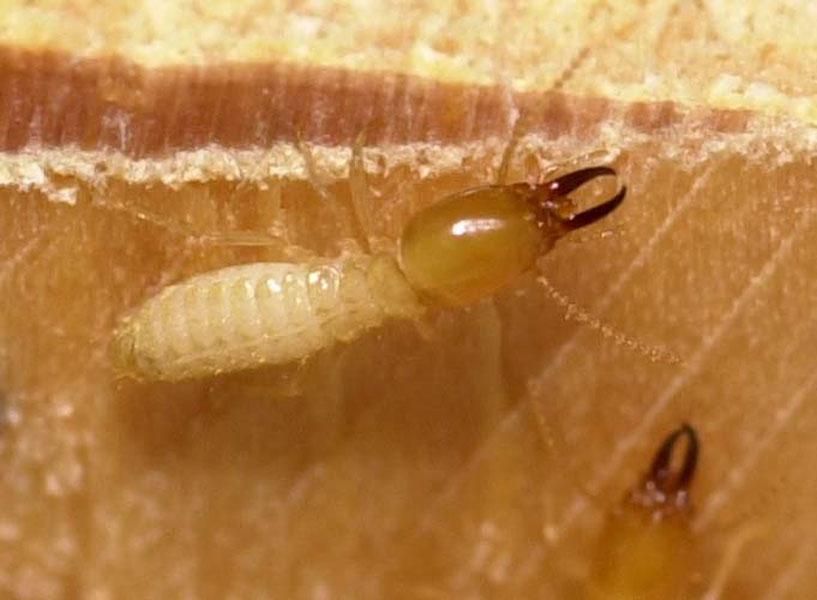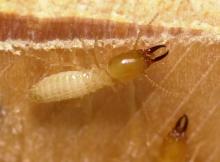Information Possibly Outdated
The information presented on this page was originally released on July 28, 2005. It may not be outdated, but please search our site for more current information. If you plan to quote or reference this information in a publication, please check with the Extension specialist or author before proceeding.
Research tackles termite invasion
MISSISSIPPI STATE -- Most homeowners go to a lot of trouble and expense to keep termites away, but a group of Mississippi State University scientists is inviting the ravenous Formosan subterranean termite to come and stay for dinner.
Researchers designed a field test at the McNeill Unit of the Mississippi Agricultural and Forestry Experiment Station in Pearl River County to study ways to help homes and other wooden construction resist the Formosan invasion. The test site includes four wooden structures and a small laboratory.
McNeill is in an area of Mississippi currently infested by the Formosan termite. The expertise of MSU scientists in termite biology and wood preservation makes the site an ideal location for research on control techniques.
"The McNeill site is one of the few places in the world where the termite resistance of 4-by-8-foot building panels and associated wall framing can be tested in replicated studies," said Terry Amburgey, a professor in the MSU Department of Forest Products.
Native to China and now established throughout Asia, the Formosan termite is believed to have entered the United States on ships returning from World War II and the Korean and Vietnam wars.
The pests are thought to have entered the country through U.S. ports, including those along the Gulf Coast, as stowaways in wooden crates, pallets and various pieces of military equipment.
"For almost 40 years, the Formosan termite was a nearly invisible pest," Amburgey said. "But during the past decade, it has caused millions of dollars in damage to homes and other structures in the New Orleans area alone."
New Orleans is a virtual buffet for termites because of its hot, humid climate, densely packed wood-frame homes and other structures with thick, porous masonry walls. Even the ancient oak trees that line the city's historic areas are falling victim to Formosans, which eat the wood in the center of the trees, leaving them susceptible to wind damage.
Larger in size and appetite than native termites, Formosans do not need to go into moist soil to survive. As a result, the usual soil treatments for termite control do not always work on them.
What the MSU scientists learn will help determine defenses against the costly pest.
"Tests conducted at McNeill will provide data needed by building product and termiticide manufacturers, code officials, architects, contractors and entomologists to assure that houses built in Mississippi and other areas will have reasonable resistance to Formosan termites," Amburgey said.
Research associate Michael Sanders began studying Formosans about 10 years ago when he was among a group of scientists called to Hawaii by the U.S. Navy to combat the pest in wooden poles supporting communication antennas.
"We have to change our approach when it comes to controlling Formosans," he said.
One of the things the team learned in Hawaii was that the termites are attracted to active antennas but not to those that are inactive. The MSU scientists are using that information in research with electromagnetic frequencies to lure Formosans to specific locations, including those containing bait traps.
"If we can attract them to a bait station rather than waiting for them to accidentally find one through foraging, it will be a huge advance in pest control," Sanders said.
Other research at the McNeill site includes evaluation of the effectiveness of various insecticides and construction techniques in preventing infestations. The tests began in 2003 with termite colonies established at the site. Laboratory testing also is under way at the facility to evaluate the effectiveness of new preservative systems exposed to the termites.
Upcoming research at the site will include tests of commercial construction materials to determine how resistant they are to Formosans and other termites.
"We're also studying the biology of the insect to learn how to better deal with this particular species," Sanders said.



